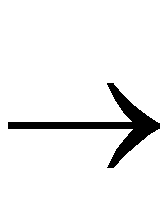FPGA Editor GuideChapter 7: Customizing the FPGA Editor
Customizing with Command Scripts
A script is a series of commands that you can record and play back.
Recording a Script
Use the following steps to record a script.
- If the script is going to be used on objects that will change each time you run the script, you must first select the objects you want the script to process.
- Select the following commands to display the Script Record dialog box.
Tools  Scripts
Scripts  Begin Recording
Begin Recording
- Enter a name in the Script File Name field, or press the browse button and use the Save As dialog box to specify the name and directory. Script files use a .scr extension. If you do not include an extension, the system adds this extension to your file name.
- Select OK.
- Enter the series of commands that you want to record on the command line, from the pull-down menus, and so on.
Note: The Script Record dialog box does not allow nested scripts. If you attempt to record a script within a script using the Script Record dialog box, you will get an error message. However, you can manually edit a script file to use nested scripts.
- To finish recording the script, select the following.
Tools  Scripts
Scripts  End Recording
End Recording
Playing Back a Script
- If the script commands are performed on selected objects, you must first select these objects.
- Select the following to display the Script Playback dialog box.
Tools  Scripts
Scripts  Playback
Playback
- Enter the script file name in the Script File Name field, or press the browse button and use the Open dialog box to select the file.
- Select the Playback Options to specify the following.
- Ignore Post Commands
Dialog boxes resulting from commands in the script are not posted as the script plays back. If you do not select this option, dialog boxes are posted and remain open after playback is finished. In either case, the commands invoked by the dialog boxes are performed.
- Update Display
This option updates the display in the FPGA Editor window every time a command that redraws the window is run by the script. If you do not select this option, the display is updated only after script playback is finished.
- Echo Commands
The commands run by the script appear in the history area during playback. If you do not select this option, the only commands that appear in the history area are the commands indicating when the script playback starts and ends. This option is useful because you can scroll through the history area to view the commands.
- Select OK.
The commands in the script are performed on the selected objects.